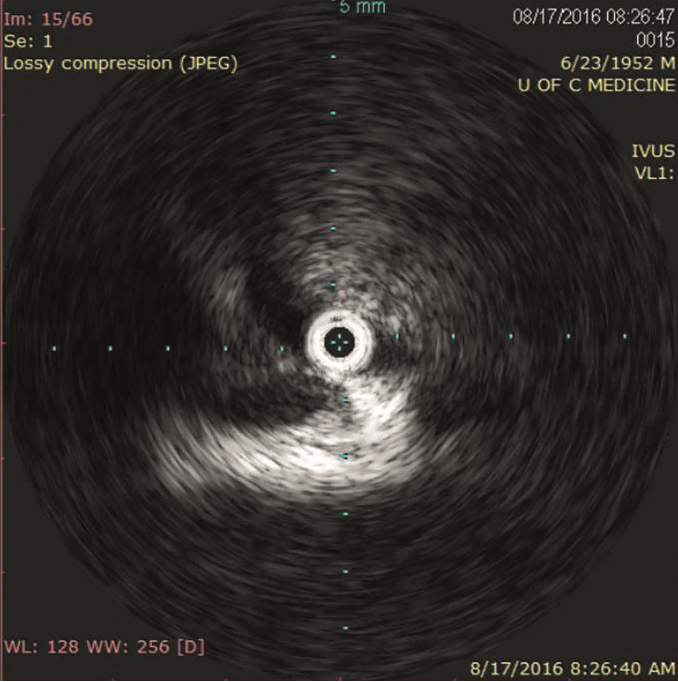 The VIDIO study, led by Paul Gagne, Southern CT Vascular Center, Darien, USA, showed that intravenous ultrasound (IVUS) is more sensitive for assessing treatable iliofemoral vein stenosis compared with multiplanar venography and frequently leads to revised treatment plans and the potential for improved clinical outcome.
The VIDIO study, led by Paul Gagne, Southern CT Vascular Center, Darien, USA, showed that intravenous ultrasound (IVUS) is more sensitive for assessing treatable iliofemoral vein stenosis compared with multiplanar venography and frequently leads to revised treatment plans and the potential for improved clinical outcome.
The results of VIDIO (Venography versus intravascular ultrasound for diagnosing and treating iliofemoral vein obstruction) were published in the September 2017 issue of Journal of Vascular Surgery – Venous and Lymphatic Disorders.
According to Gagne et al, during a 14-month period beginning July 2014, 100 patients with clinical class C4 to C6 venous disease and suspected iliofemoral vein obstruction were enrolled at 11 US and three European sites. The inferior vena cava and common iliac, external iliac, and common femoral veins were imaged. Venograms were measured for vein diameter; IVUS provided diameter and area measurements. Multiplanar venograms included three views: anteroposterior and 30-degree right and left anterior oblique views. A 50% diameter stenosis by venography and a 50% cross-sectional area reduction by IVUS were considered significant.

The results showed that venography identified stenotic lesions in 51 of 100 patients, whereas IVUS identified lesions in 81 of 100 patients. Compared with IVUS, the diameter reduction was on average 11% less for venography (p<0.001). The intraclass correlation coefficient was 0.505 for vein diameter stenosis calculated with the two methods. IVUS identified significant lesions not detected with three-view venography in 26.3% of patients. Investigators revised the treatment plan in 57 of 100 cases after IVUS, most often because of failure of venography to detect a significant lesion (41/57 [72%]). IVUS led to an increased number of stents in 13 of 57 subjects (23%) and the avoidance of an endovascular procedure in three of 57 subjects (5%). Overall, IVUS changed the treatment plan in 57 patients; 54 patients had stents placed on the basis of IVUS detection of significant iliofemoral vein obstructive lesions not appreciated with venography, whereas three patients with significant lesions on venography had no stent placed on the basis of IVUS.









